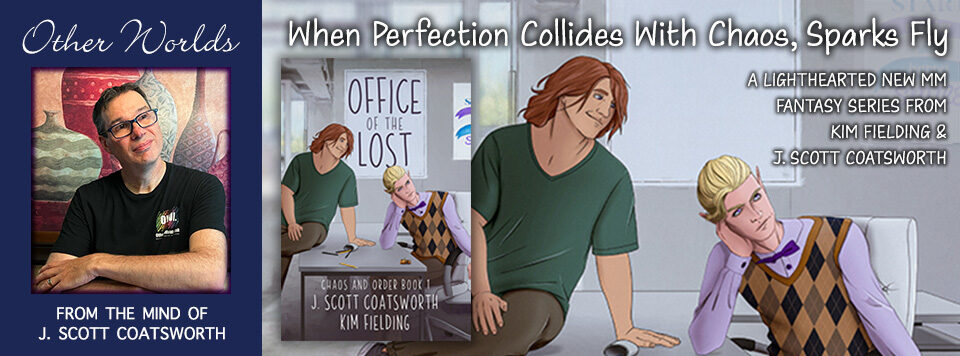
Last week we talked about writing in first person. This week I thought I’d tackle the more common third person usage.
Third person means using he/she/they etc pronouns – stories that describe the action from outside of the characters. It comes in three basic flavors:
Third Person Omniscient: The most common of the three. Omniscient allows you to have multiple viewpoint characters, and an outside “omniscient” narrator who’s basically describing the story as it goes (you). This version of third person gives you the most freedom, as you can head hop (although doing so within a scene is strongly discouraged) and move around your story’s playing field at will. You can also dive into the characters’ heads to show us what they are thinking and feeling. This is what I write the majority of my stories in.
Third Person Objective: This is similar to omniscient, but reports the story objectively without giving the reader a window on the characters’ thoughts and feelings. You can still head hop and give a wider picture, but this version tends to feel drier and less rich. Generally speaking, it’s more suited to non-fiction reporting than vivid fiction prose.
Third Person Limited: This is the most intimate of the versions, and also (as its name suggests) the most limited. The narrator (you) only has a window into a single character’s thoughts, feelings and perceptions. If that character doesn’t know something, the author (and by extension, the reader) doesn’t either. I most commonly use this in short stories, but you can also make an entire novel out of it. You’ll just need to come up with some creative ways to get your character the information they need during the story – without becoming a writing contortionist.
So why use third person instead of first person?
Third person is what the majority of stories are told in. It’s comfortable, and establishes a small amount of distance between the story and the reader.
If reading first person is like sitting in the front row of the movie theater as a car comes crashing at you at 100 MPH, third person is sitting in the back row with the best view and a big tub of hot buttered popcorn.
Third person, in all its forms, also gives you a little more leeway to take note of the world around your characters. In first person:
I walked into the room. It was small, with some kind of wood trim, and a neat wooden desk in the middle. Seeing natural wood again made me happy.
In third person, you can share a bit more than the character knows, although you don’t want to overdo it and infodump (the topic for a future column!):
Alex walked into the room. The walls were paneled in a rich, hand-stained oak, while the small desk in the center was mahogany, its surface polished to a deep sheen. Alex smiled to see natural wood again, warmth spreading through their chest.
Third Limited is similar to the first person example above, in that you can’t know anything beyond what your character knows:
Alex walked into the room. It was small, with some kind of wood trim, and a neat wooden desk in the middle. It’s good to see natural wood again.
And Third Objective strips out a lot of the beauty and joy:
Alex walked into the room. It was small, with oak trim, and a neat wooden desk in the middle.
There are good reasons to use each of these, mostly driven by the kind of story you want to tell and how you want to convey information to your reader. Whichever version of third person you choose, Just be sure to be consistent. Each version has a different feel/purpose, and putting them all together can make a story feel jumbled and disjointed.
If you do choose to mix them, go for it – experimentation is part of the whole writer thing, after all! But know why you’re doing it – like they say, know the rule before you break it!
To my writer friends: Which version of third person do you usually use, and why? Have you experimented with the others?
